The Grand Canyon is one of the natural wonders of the world. Rigid cliffs descend into incredible valleys of red, all carved by the slow movement of time and water. With so many layers of rock and dirt, people from all over the world come to study, hike, and explore one of the most notable sights in the United States. Upon seeing it, people wonder just how deep it truly is. Today, we are going to find out! Just how deep is the Grand Canyon below sea level?
Five Cool Facts About the Grand Canyon
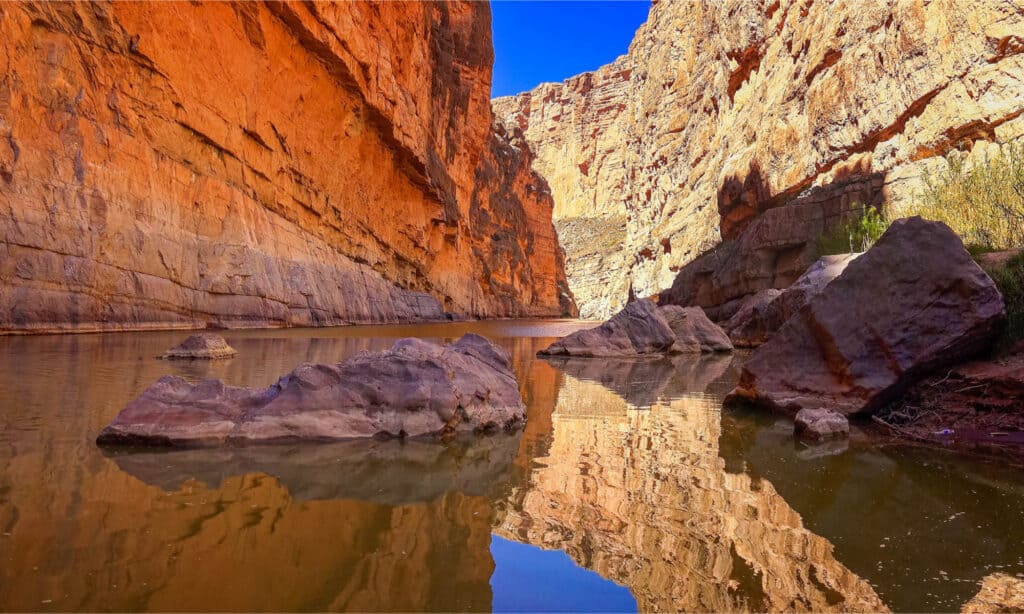
Rio Grande river flows through Santa Elena Canyon in Big Bend National Park
©CrackerClips Stock Media/Shutterstock.com
The Grand Canyon is one of the most iconic and awe-inspiring natural wonders of the world. It is a place of wonder and amazement, and there are many fascinating facts about this incredible landscape. Here are five cool facts about the Grand Canyon:
- The Grand Canyon is not the deepest canyon in the world, but it is one of the most visually stunning. The unique combination of colors, shapes, and shadows makes it a visual masterpiece.
- The Grand Canyon was formed by the erosion of the Colorado River over millions of years. The river is still at work today, cutting through the rock and creating new formations. It is estimated that the river has eroded the canyon by about one foot every 1,000 years.
- The Grand Canyon is a treasure trove of fossils, containing evidence of ancient marine life, reptiles, and mammals. Fossils of trilobites, ammonites, and early corals can be found in the rocks, as well as the bones of extinct animals like the woolly mammoth.
- The Grand Canyon has a unique climate, with temperatures ranging from over 100 degrees in the summer to below freezing in the winter. The climate and terrain support a wide variety of plant and animal life, including desert shrubs, pine forests, and a range of bird and mammal species.
- The Grand Canyon has a rich cultural history, with evidence of human occupation dating back thousands of years. The ancestral Puebloans and other Native American tribes lived in and around the canyon, leaving behind petroglyphs, ruins, and other artifacts that provide a glimpse into their way of life.
Finally, the Grand Canyon is a fascinating and beautiful place with a rich natural and cultural history. Its sheer size, geological history, and unique climate make it one of the most interesting and awe-inspiring places on earth.
How Deep Is the Grand Canyon Below Sea Level?
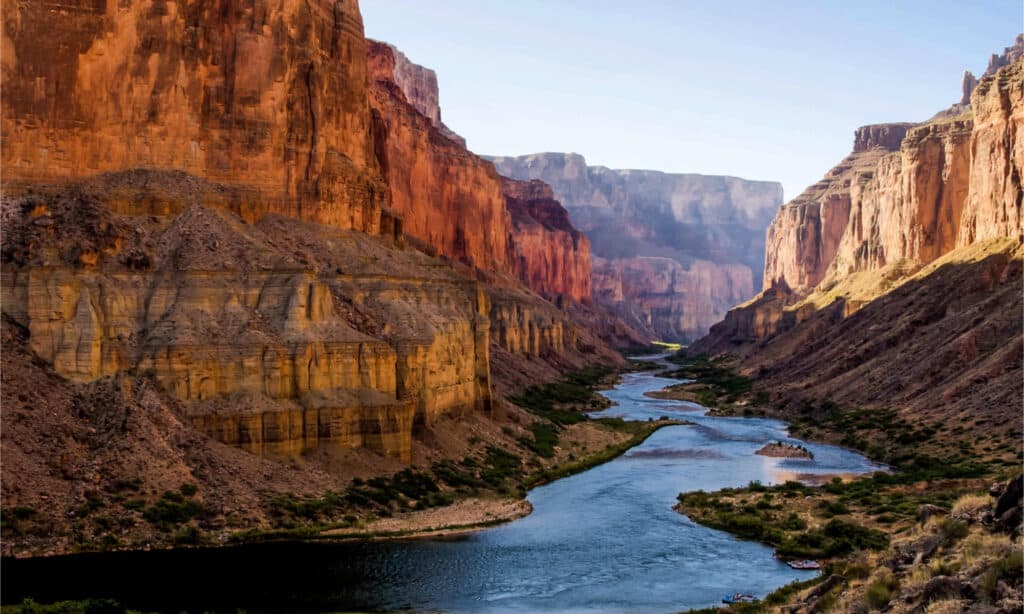
The Grand Canyon is deep but never passes below sea level.
©Beth Ruggiero-York/Shutterstock.com
Incredibly, the Grand Canyon never passes below sea level.
In a rather tricky way, the Grand Canyon is incredibly deep, but it doesn’t ever pass below sea level. Still, even with all the impressive stats, like being 277 miles long and 18 miles wide, the Grand Canyon doesn’t actually dip below sea level. The reason it can be deceiving is due to how far away from the coastline the Canyon is (so it’s hard to compare), plus the elevation of the area around it.
What Is the Deepest Part of the Grand Canyon?
Although it isn’t technically below sea level, it’s still incredibly deep. At its deepest, the Grand Canyon reaches 6,000 feet, meaning that many parts of the Canyon are well over a mile in depth. The lowest point can be found near Phantom Ranch, a shelter that is a popular hiking destination.
You can check out what lives at the bottom of the Grand Canyon.
How Did the Grand Canyon Get So Deep?
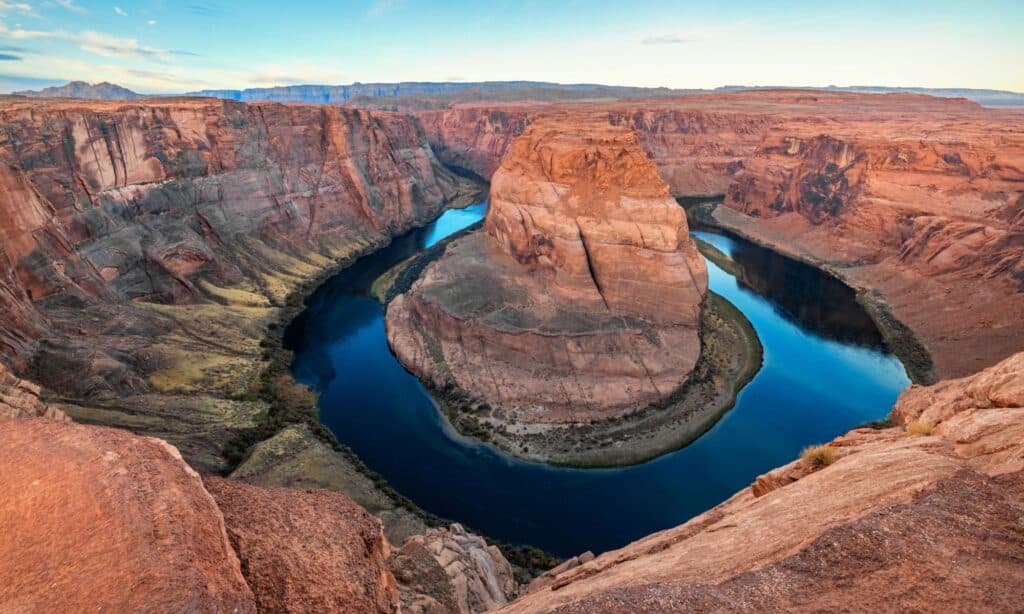
The Colorado River began cutting away the Grand Canyon 5-6 million years ago.
©Lebid Volodymyr/Shutterstock.com
As crazy as it sounds, the primary force behind the carving of the Grand Canyon is simply water and time. Around 5-6 million years ago, the Colorado River began cutting away at the rock layers it was flowing over. Through the millennia, that river eventually eroded down the plateau into the national feature that we recognize today.
What Is the Lowest Place Below Sea Level in the United States?
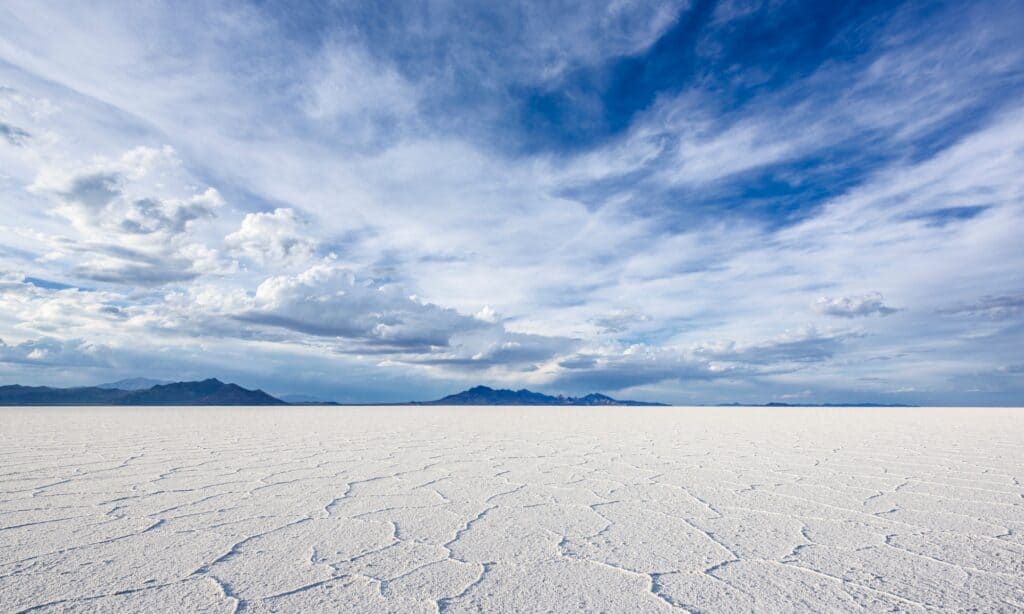
Badwater Basin is the lowest place in North America, measuring 282 feet below sea level.
©iStock.com/ablokhin
Although the Grand Canyon is deep, it isn’t the lowest point below sea level in the United States. That honor belongs to Badwater Basin, a salt flat located in Death Valley National Park, California. Death Valley National Park is home to a few records, one of which is being home to the lowest point in all of North America.
Badwater Basin is a salt flat that covers around 200 square miles. It’s a desolate landscape made up of salt, calcite, gypsum, and borax. Still, despite the high salinity of the surrounding region, wildlife thrives. Badwater Basin is recorded at 282 feet below sea level.
Animals in the Grand Canyon
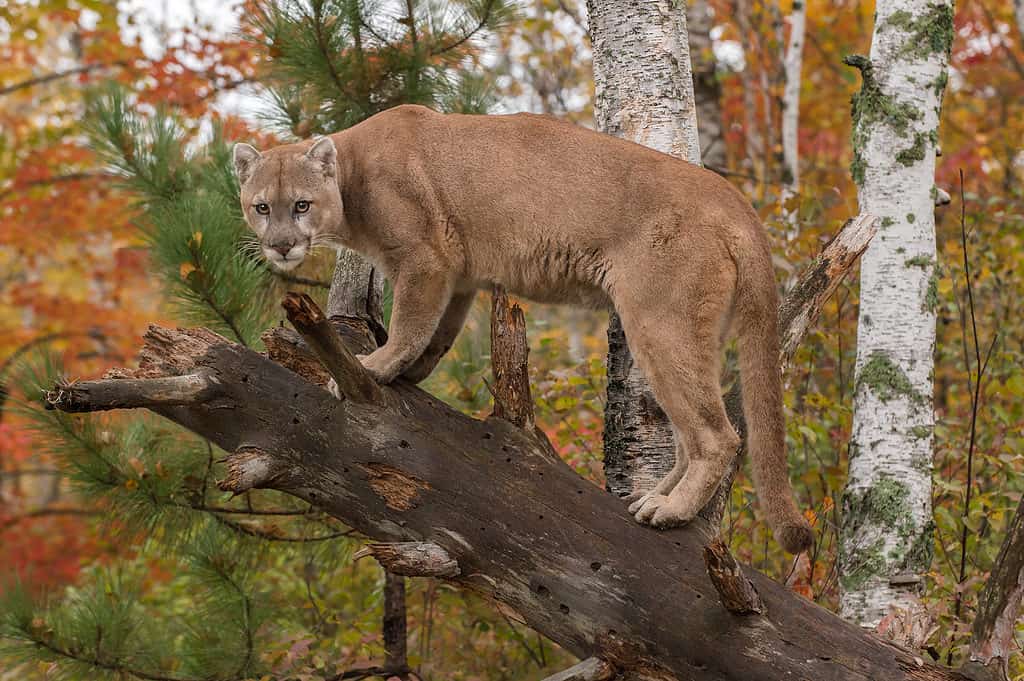
Mountain lions
, also known as cougars, are elusive and rarely seen by visitors at the Grand Canyon.
©Geoffrey Kuchera/Shutterstock.com
The Grand Canyon is not only known for its stunning natural beauty, but also for the wide variety of animals that call it home. From large mammals to tiny insects, the Grand Canyon is a diverse ecosystem that supports a rich array of wildlife.
One of the most iconic animals in the Grand Canyon is the California condor, one of the rarest birds in the world. With a wingspan of up to 10 feet, the condor is an impressive sight as it soars through the canyon. Despite its large size, the California condor is a critically endangered species, with only around 400 individuals remaining in the wild.
Another large animal found in the Grand Canyon is the mule deer. These graceful creatures are often seen grazing along the canyon’s edges or crossing the Colorado River. While mule deer are common throughout the western United States, the population in the Grand Canyon is unique due to its isolation and genetic distinctiveness.
Other large mammals in the Grand Canyon include bighorn sheep, elk, and mountain lions. Bighorn sheep are particularly well adapted to the canyon’s steep cliffs and rocky terrain, while elk can be found in the higher elevations of the park. Mountain lions, also known as cougars, are elusive and rarely seen by visitors.
Smaller animals in the Grand Canyon include a wide range of rodents, reptiles, and insects. Some of the most common rodents include the rock squirrel, the pocket mouse, and the desert woodrat. Reptiles such as the desert spiny lizard and the canyon tree frog are also commonly found in the canyon. Insects, such as the Grand Canyon pink rattlesnake and the tarantula hawk wasp, are fascinating but often overlooked members of the Grand Canyon ecosystem.
Where is the Grand Canyon Located on a Map?
You can drive into Grand Canyon National Park, but during the busy season it might be difficult to find parking or to travel along park roads because of the traffic congestion. Many people opt to park 60 miles away in Williams, Arizona, and take the historic (and fun!) train ride to the Grand Canyon.
The photo featured at the top of this post is © sumikophoto/Shutterstock.com
Thank you for reading! Have some feedback for us? Contact the AZ Animals editorial team.






